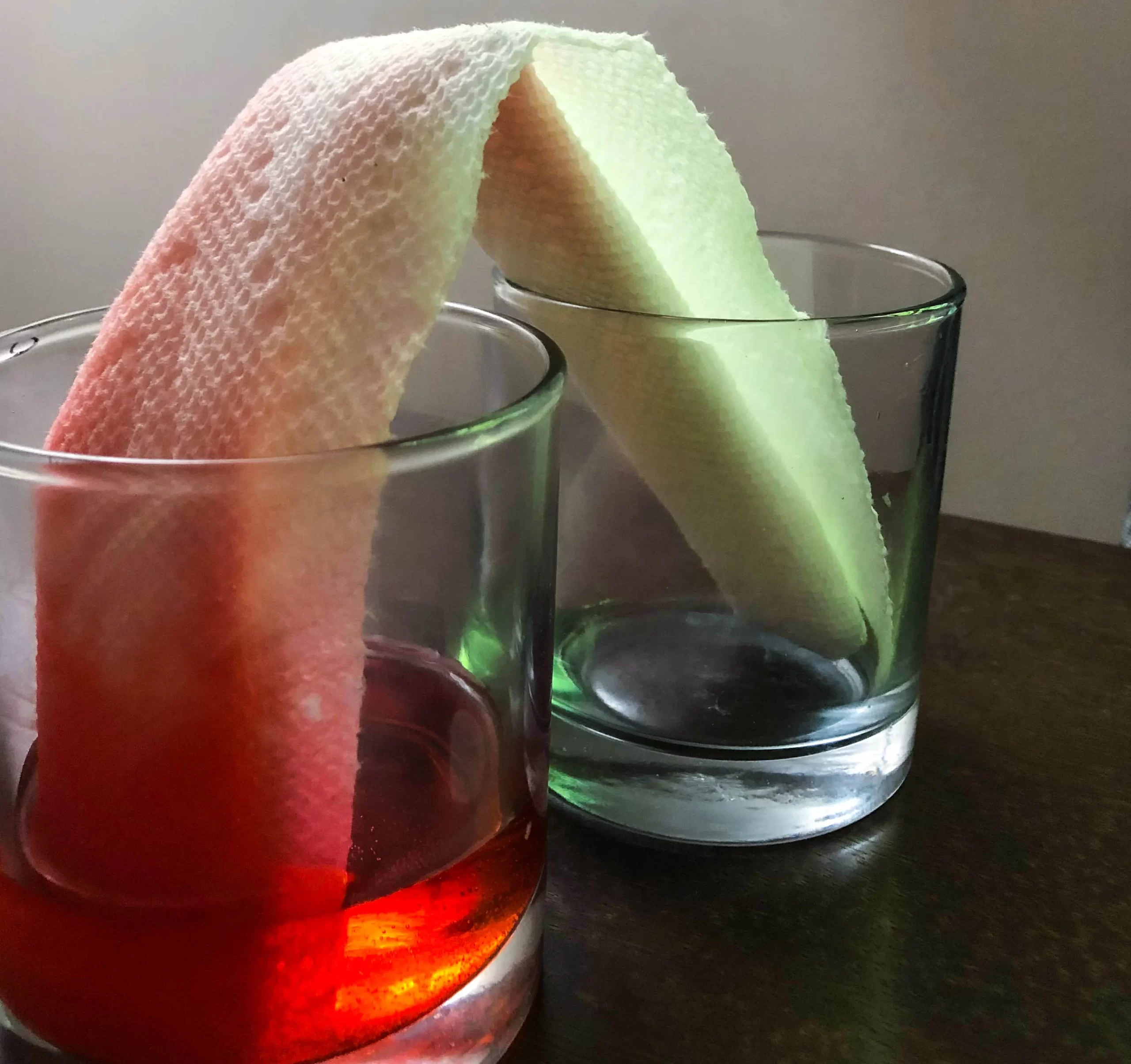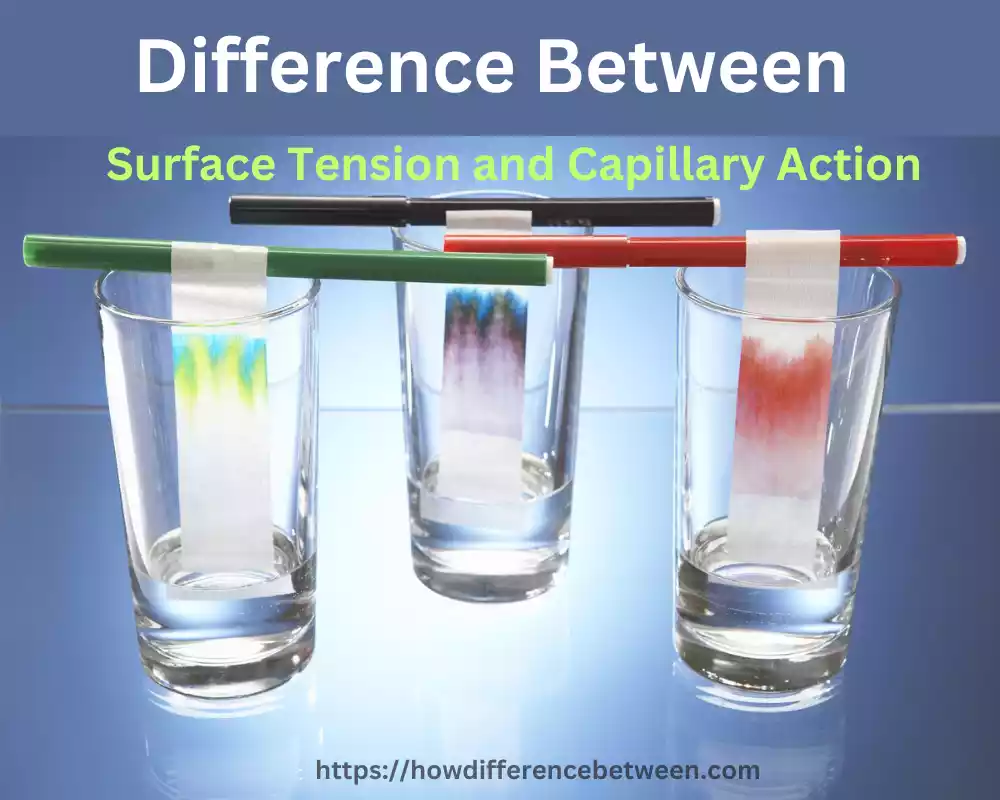Surface Tension and Capillary Action are two fascinating phenomena that govern the behavior of liquids at a molecular level. Understanding these concepts is crucial as they play significant roles in various natural processes and technological applications. In this article, we will explore the science behind surface tension and capillary action, along with their real-life implications.
What is Surface Tension?
Surface tension is a fascinating phenomenon in the world of physics and chemistry. It refers to the force that causes the surface of a liquid to behave like a stretched elastic sheet. This force is a result of the cohesive interactions between molecules at the liquid’s surface, creating a kind of “skin” that tries to minimize the surface area.

To better understand surface tension, consider a drop of water on a flat surface. The molecules in the drop are attracted to each other, creating a cohesive force that pulls them inward. This inward force causes the drop to form a spherical shape, as it tries to minimize its surface area while maintaining its volume.
Surface tension plays a significant role in various natural phenomena and everyday experiences. It is the reason why some insects, like water striders, can walk on water without sinking. The cohesive forces between the water molecules allow the insects to distribute their weight and remain on the water’s surface.
Additionally, surface tension contributes to the formation of raindrops. Water molecules in the atmosphere come together due to cohesive forces, creating larger droplets that eventually fall as rain when they become heavy enough.
Surface tension is the result of cohesive forces at the liquid’s surface, creating a unique behavior that affects how liquids interact with each other and with solid surfaces. It is an essential concept in understanding the behavior of liquids in various natural processes and technological applications.
What is Capillary Action?
Capillary action is another fascinating natural phenomenon related to the behavior of liquids. It refers to the ability of a liquid to flow against gravity in a narrow space, such as a thin tube or a porous material. This phenomenon occurs due to the combined forces of adhesion and cohesion.

To understand capillary action, imagine a small tube, like a narrow straw, dipped into a liquid, such as water. When the tube is in contact with the liquid, the liquid molecules are attracted to the tube’s surface (adhesion) and to each other (cohesion). These forces work together to draw the liquid upward in the tube, creating a rise above the liquid’s level outside the tube.
The height to which the liquid rises in the tube depends on several factors, including the diameter of the tube and the properties of the liquid. Thinner tubes or tubes with more significant adhesion and cohesion forces will result in higher capillary rise.
Capillary action is not only limited to thin tubes; it also plays a crucial role in the movement of liquids through porous materials, like soil and plant roots. In plants, capillary action helps in the upward transport of water and nutrients from the roots to other parts of the plant, even against the force of gravity.
This phenomenon has practical applications in our daily lives as well. For example, it’s the reason why a paper towel absorbs water when it comes into contact with a spill. The tiny fibers in the paper towel create capillary spaces that draw the liquid upward, allowing it to be absorbed.
Capillary action is the result of the combined forces of adhesion and cohesion, allowing liquids to defy gravity and flow in narrow spaces. It is a fundamental process with various applications in nature, technology, and our everyday experiences.
Comparison table of Surface Tension and Capillary Action
Below is a comparison table of Surface Tension and Capillary Action:
| Aspect | Surface Tension | Capillary Action |
|---|---|---|
| Definition | The force causing the liquid surface to behave like a stretched elastic sheet due to cohesive forces between molecules at the surface. | The ability of a liquid to flow against gravity in narrow spaces, like tubes or porous materials, due to combined adhesion and cohesion forces. |
| Cause | Cohesive forces between liquid molecules at the surface. | Combined forces of adhesion to the container’s surface and cohesion between liquid molecules. |
| Shape Formation | Creates a “skin” on the liquid’s surface, tending to minimize surface area. | Results in a rise of liquid in narrow spaces, forming a concave meniscus. |
| Effects on Insects | Allows certain insects (e.g., water striders) to walk on water without sinking. | Enables insects to access water from small water bodies or obtain nutrients from plants. |
| Formation of Raindrops | Contributes to the coalescence of water droplets in clouds, leading to the formation of raindrops. | Aids in the rise of water from the soil to the roots of plants, supporting their growth. |
| Applications | Used in various technological applications, such as ink pens, microfluidics, and medical capillary tubes. | Essential for water uptake and nutrient transportation in plants. Also found in the absorption of liquids by paper towels and sponges. |
| Key Factors | Cohesive forces between liquid molecules. | Diameter of the tube or pore, adhesion to the material, and cohesion between liquid molecules. |
| Examples | Walking on water by water striders. | Capillary rise in a thin tube or the absorption of water by a paper towel. |
| Natural Processes | Contributes to the formation of raindrops and the behavior of insects on water surfaces. | Facilitates the movement of water in plants and the rise of liquid in small tubes. |
Relationship Between Surface Tension and Capillary Action
Surface tension and capillary action have an intricate relationship. Surface tension plays an integral part in this phenomenon known as capillary action;
Here are a few points which demonstrate their correlation:
- Surface tension facilitates capillary action: Surface tension creates a cohesive force within liquid that helps pull it upward through capillary tubes or porous materials, with surface tension as an effect of cohesive forces between molecules giving rise to surface tension contributing to upward movements of liquid against gravity during capillary action.
- Surface tension determines capillary rise: Surface tension determines how high liquid can rise within a capillary tube, with higher surface tension leading to greater rise while reduced tension restricting how far up it may rise.
- Capillary action can be affected by various liquid properties: surface tension is one factor which determines its extent; others such as viscosity, density and contact angle come into play as well. Together these properties determine its strength and extent.
- Capillary action changes surface tension: as liquid rises or falls through a capillary tube, its movement alters its interaction with air molecules at its liquid-air interface and this change changes surface tension distribution as well as overall surface tension of liquid. This change may ultimately alter overall surface tension of liquid.
- Synergistic effects in practical applications: Surface tension and capillary action work in harmony to produce desired outcomes in various applications, including printing with inkjet cartridges where surface tension controls droplet formation while capillary action directs ink flow, as well as plant roots where capillary action helps pull water from soil against gravity while surface tension allows its distribution within their vascular systems.
Surface tension and capillary action are closely interwoven phenomena: surface tension provides the cohesive force essential for capillary action to occur while capillary action depends on liquid properties such as surface tension to act upon it. Their interaction plays an integral part in understanding and exploiting these phenomena for scientific, industrial, or natural processes.
Real-Life Applications
Real-Life Applications of Surface Tension:
- Real-Life Applications of Surface Tension: Surface tension is responsible for creating droplets. This property can be leveraged in various applications, including inkjet printing where precise droplet formation is essential to high-resolution printing.
- Soap Bubbles: Surface tension allows for the formation and stability of soap bubbles, with their characteristic round shapes due to this force acting uniformly across their entire surface area, thus decreasing it further.
- Meniscus Formation: Surface tension induces concave and convex liquid menisci in glass tubes or capillary systems, used in laboratory measurements using pipettes, capillary tubes, and glassware. This phenomenon provides useful laboratory measurements.
- Capillary Rise in Plants: Surface tension plays an essential part in the upward movement of water within plants’ roots, stems and leaves – via capillary action which allows water to bypass gravity while surface tension helps distribute it among their vascular system.
Real-World Applications of Capillary Action:
- Absorbent Materials: Capillary action is utilized by absorbent materials like paper towels, sponges and wicks in order to rapidly absorb liquids through an interlinked network of small capillaries found within. This enables rapid liquid absorption.
- Soil Moisture: Capillary action helps distribute water across soil layers, providing plants access to deeper sources. Furthermore, capillary action facilitates upward water movement from a source such as the ground water table towards plant roots – something essential to both growth and agriculture.
- Oil Wicks in Lamps: Traditional oil lamps use capillary action to draw oil from its reservoir to the wick for use as light production. As this happens, capillary action draws up oil through capillaries into a reservoir before rising through to be burned off and released light by combustion.
- Microfluidics: Capillary action is widely utilized by microfluidic devices that manipulate small volumes of fluid for various uses – lab-on-a-chip systems, medical diagnostics and chemical analysis are just a few such uses.
- Blood Flow in Capillaries: Capillary action facilitates blood movement within narrow capillaries of the circulatory system, working alongside surface tension to promote optimal blood flow and facilitate exchanging of nutrients and waste products in tissues.
- Water Movement in Plants: Capillary action provides water and nutrients from its source at the roots to other parts of a plant’s system, contributing to continuous drainage via its xylem vessels, supporting both its growth and survival.
Here are just a few examples of surface tension and capillary action found practical applications across several fields, such as printing, biology, materials science and fluid dynamics. Understanding and applying these phenomena has allowed significant advancements to technology, agriculture and scientific research.
Finish
Surface Tension and Capillary Action are two fundamental phenomena that shape the behavior of liquids in our world. From the formation of raindrops to the ink in our pens, these forces play a significant role in our everyday lives and the natural processes around us. As scientists continue to explore the complexities of these interactions, we can look forward to witnessing their impact on technology and various aspects of our lives.































